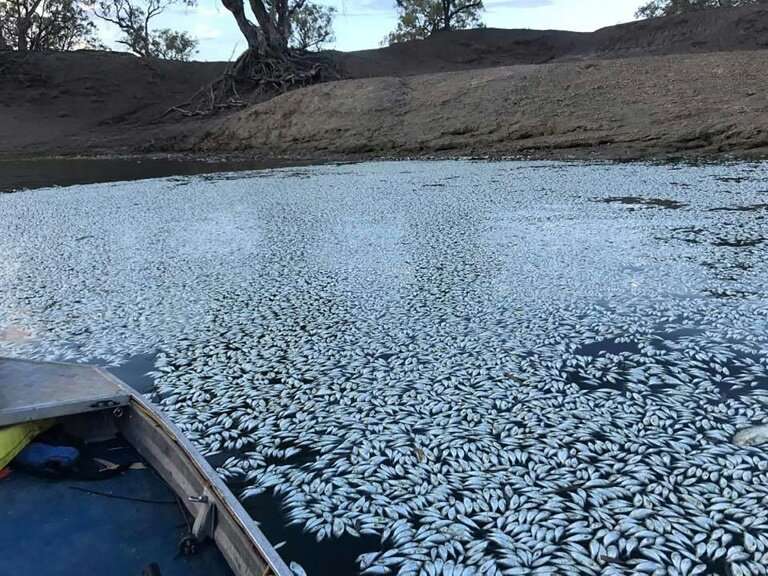In 2013, a marine heat wave swept across Southern Australia, raising sea surface temperatures to a scorching 27 degrees Celsius, well above the average of 24 degrees. This led to a distressing ecological event as a prolonged and widespread fish-kill occurred, affecting 29 species of marine life and spanning 2900 km of coastline from January to May 2013.
Studies revealed the presence of abrasive and harmful phytoplankton in unnaturally high concentrations, raising suspicions about the cause of the mass mortality event. Laboratory tests revealed the grim reality faced by the marine inhabitants, showing signs of long-term stress, gill damage, and bacterial infections in the dead fish.
Scientists pieced together the puzzle, attributing the devastation to the marine heatwave of 2013, which acted as a catalyst for the growth of harmful algal blooms in the region.
These blooms suffocated the marine life, leading to the tragic loss of fish and other species along the Southern Australian coastline. This event demonstrated the severe impact of marine heat waves on marine life.
The 2013 disaster raised a critical question— Can marine heatwaves lead to mass extinctions? Understanding and addressing these effects is vital for the future health of our oceans, as it will help us develop strategies to mitigate these impacts, preserve marine biodiversity, and ensure the resilience of marine ecosystems in the face of a changing climate.
What is Marine Heat Waves?
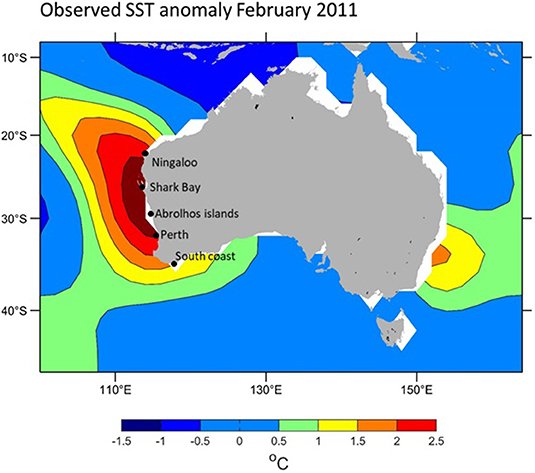
The term “marine heatwave” (MHW) was first coined in 2011 following an unprecedented warming event that swept across Western Australia, triggering alarms among conservationists and environmental scientists.
This event marked a pivotal moment in our understanding of oceanic phenomena, as it highlighted the need for a clear definition and characterization of these extremely warm water episodes.
MHWs are prolonged periods of anomalously warm water at a specific location, distinguished by temperatures that exceed either fixed, seasonally varying, or cumulative thresholds.
According to the definition, a warming event lasting a minimum of five consecutive days qualifies as a marine heatwave, with the intensity determined by the magnitude of the temperature anomaly above the normal for that location and time of year.
The characteristics of MHWs, such as duration, intensity, location, and depth of ocean warming, are crucial in determining their impacts on marine ecosystems. MHWs can cover areas ranging from 500 to 2,000 kilometers and can persist for weeks to years, posing significant challenges to marine life and ecosystems.
Prolonged and intense MHWs can have devastating consequences, leading to mass coral bleaching, significant declines in kelp forests and seagrass meadows, and substantial biodiversity losses. These ecological impacts extend to socioeconomic realms, resulting in losses in fisheries income, erosion of essential ecosystem services, mass mortalities of iconic species, and stakeholder conflicts.
Research has shown that MHWs can be driven by a combination of oceanic and atmospheric processes, including changes in ocean currents, temporary weakening of winds, and anthropogenic warming.
The impacts of MHWs can be location-, species-, and process-specific, highlighting the need for a nuanced understanding of these events and their effects on different ecosystems and communities.
Climate Change and Marine Heatwaves
These events are not only a natural phenomenon but are also intensified by anthropogenic warming activities, leading to more frequent and severe MHWs with lasting ecological and economic consequences.
The frequency and duration of MHWs have increased significantly over the past century, with a doubling of events since 1982 and a 50 percent increase in the total number of days with MHWs globally.
This trend is expected to continue, with climate change projected to lead to more frequent, longer-lasting, and more intense MHWs in the future.
The 2011 marine heatwave in Western Australia highlighted the crucial need for a standardised approach to defining and characterising these heatwaves. By clearly defining the parameters of these extreme warm water events, researchers can improve their understanding of the factors that drive marine heat waves, enhance predictive capabilities, and assess the significant impacts on marine ecosystems.
This knowledge is essential for developing effective adaptation and mitigation strategies to safeguard the health and resilience of our oceans in the face of a rapidly changing climate.
Effects of MHWs
The MHWs can drastically alter marine ecosystems, triggering events such as mass coral bleaching, the decline of kelp forests, and significant biodiversity losses. However, MHWs rarely occur in isolation. They often coincide with other stressors, such as increased turbidity, desiccation stress, harmful algal blooms, and anoxia.
These stressors create a complex web of interactions, intensifying the overall impact on marine species and ecosystems. This interconnected web of challenges poses severe threats to marine species and the overall health of our oceans.
Physiological processes governing the performance of an organism
High temperatures can have a significant impact on the physiological processes governing the performance of an organism. The consequences of MHWs can range from sublethal to lethal. A change in temperature influences fundamental biological functions such as photosynthesis, respiration, growth, reproduction, phenology, and survival of species.
As temperatures rise, organisms must utilize more energy to regulate their internal environment and cope with the altered conditions. This increased energy demand can lead to an energy deficit, particularly during intense MHWs, negatively affecting overall performance.
In response, some species opt to relocate or migrate to cooler waters, reducing local population densities. When relocation isn’t an option, species may resort to compensatory mechanisms to mitigate the energy deficit.
This may involve increased feeding habits, decreasing growth rates, or sacrificing reproductive efforts. The decline in energy availability can impair neuromuscular and physiological functions, jeopardizing individual survival.
Fish Species
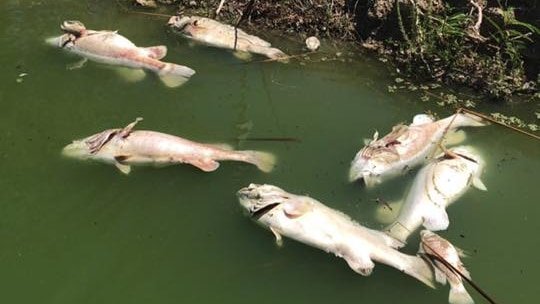
MHWs can trigger mass mortality events among fish populations in the wild and aquaculture. These events are often associated with factors like harmful algal blooms, deoxygenation, and disease outbreaks exacerbated by elevated temperatures.
Fish species with narrow thermal tolerance are particularly vulnerable to the effects of MHWs. For instance, in the Red Sea, 40 species of coral fish succumbed to thermal stress and bacterial infections during a 2017 MHW.
In Chile, MHW-induced harmful algal blooms, dubbed Godzilla red tide events, killed 100,000 tons of coho salmon and trout. The notorious Blob events in 2014 and 2016 caused a drastic decline in the Pacific Cod population, prompting fishery closures.
In South Australia, 39 fish kill events were reported in 2013, with an estimate of about 100 – 2000 fish dying per km. Gill lesions were found in the dead fish. Laboratory tests showed the cause of death to be bacterial infection.
An interesting behaviour of trout during an MHW in the Coral Sea in 2016 was observed. The catchability of coral trout in the area significantly increased. Scientists attributed this behaviour to the fish being more active in feeding, making fish-catching baits more attractive to trout.
This is discussed in the previous section, as well as how increased temperature alters species’ feeding habits. Conversely, this increased catchability could have negative consequences, potentially leading to overfishing and a decline in the trout population.
Marine Forests
Marine forests, including kelp and seagrass ecosystems, are vital components of coastal environments, supporting diverse marine life. These underwater forests play essential roles in maintaining the health of marine ecosystems.
They provide habitat and food for numerous species, help in carbon sequestration, offer coastal protection by stabilizing sediments, and contribute to nutrient cycling. However, marine heatwaves can devastate these sensitive ecosystems, leading to cascading effects throughout the marine environment.
Damaging Kelp Forests
MHWs can cause significant damage to kelp forests, resulting in habitat loss and shifts in species distribution and behaviour. In Baja, California, the MHW events of 2014 and 2016 destroyed a large portion of the region’s kelp forests.
This catastrophic loss disrupted the entire ecosystem, causing substantial shifts in habitat structure and species behaviour. Even more alarming, the Bull kelp species in New Zealand became regionally extinct during the 2017-18 MHW in the Tasman Sea.
Impacts on Seagrass Meadows
Seagrass meadows, another critical component of marine ecosystems, are also heavily impacted by MHWs. In the Mediterranean, the combined effects of MHWs and continuous sea warming have reduced Posidonia oceanica seagrass meadows. This habitat shift has allowed non-native species to thrive, altering these ecosystems’ biodiversity and carbon capture capacity.
The most well-documented case occurred during the 2011 MHW in Western Australia, where a staggering 1,300 square kilometers of seagrass were decimated. This loss threatened the survival of numerous marine species, including sea snakes, dugongs, bottlenose dolphins, and green turtles, which rely on these habitats for food, shelter, and breeding grounds.
The impact of MHWs extends beyond the immediate destruction of marine habitats. In Western Australia, the 2011 MHW also led to the loss of 100 kilometers of kelp and fucoid forests.
A decade later, the affected areas’ vegetation, fish, and invertebrate communities struggle to recover. The loss of these “marine forests” disrupts biodiversity and compromises essential ecosystem services such as carbon sequestration, coastal protection, and nutrient cycling.
Coral Reefs bleaching
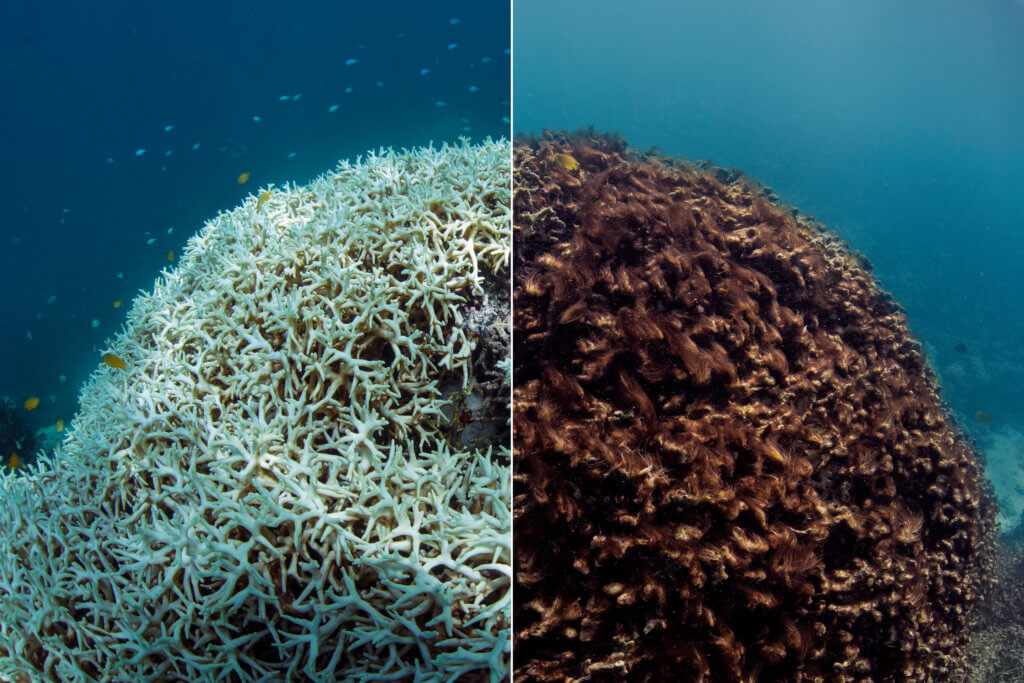
Coral reefs are among the most precious and biodiverse ecosystems on Earth, providing habitat for numerous marine species and supporting the livelihoods of millions of people worldwide. However, these vital ecosystems are severely threatened by the impacts of MHWs.
One of the most notable impacts of MHWs on coral reefs is coral bleaching. This phenomenon occurs when corals lose their vibrant colours and vital symbiotic algae, ultimately leading to their death.
The first reported case of coral bleaching dates back to 1998; since then, these events have become more severe and widespread. In 2014 and 2017, more than half of the world’s coral reefs were affected by bleaching events, highlighting the global scale of this ecological crisis.
The loss of reef habitat and structural integrity directly impacts the diversity of coral reef ecosystems and the species that rely on them. Major bleaching events, such as those experienced in the Great Barrier Reef in 2016, 2017, and 2020, have significantly declined coral-eating and herbivorous fish populations.
Concurrently, there has been an increase in plankton-eating fish and shifts in invertebrate communities, indicating profound changes in the ecosystem’s balance and functionality.
In addition to direct mortality, MHWs can also affect corals’ reproductive and growth capacity, leading to a chain of negative impacts on associated biodiversity.
Reduced reproductive and impaired growth rates can hinder the recovery and resilience of coral reef ecosystems, exacerbating the long-term consequences of MHWs.
Impacts on Other Species

In addition to impacting fish and marine vegetation, MHWs also have severe consequences for sessile invertebrates like scallops, mussels, and barnacles. For example, the 2011 MHW in Western Australia significantly declined scallop and blue swimmer crab populations, leading to fisheries closures lasting between 18 months to 5 years. These closures impact commercial fisheries and disrupt local ecosystems and traditional fishing communities.
Furthermore, between 1979 and 2020, approximately 2300 mass mortality events affecting around 90 types of benthic species, including corals, oysters, and mussels, were recorded globally, with many attributed to ocean warming and the associated MHWs.
Additionally, the 1998 El Niño event led to mass mortality of Galapagos sea lions and king penguins, further highlighting the wide-ranging impacts of MHWs on marine ecosystems and species diversity.
Effects of Marine Heatwaves on Ecosystem Services
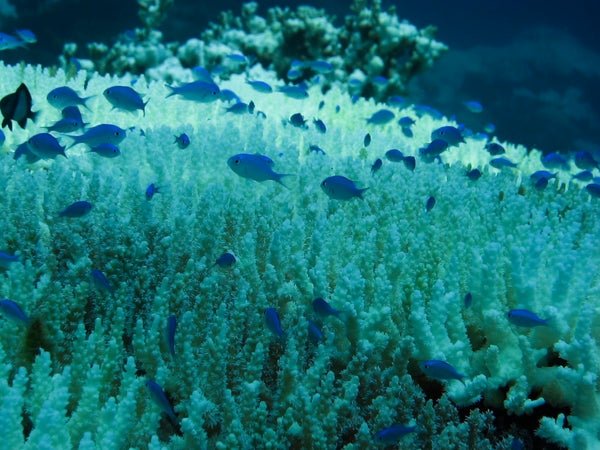
Ecosystem services, the benefits healthy ecosystems provide to humans, encompass provisioning, cultural, regulating, and supporting services. These services are categorized into four types: provisioning, regulating, cultural, and supporting services.
Provisioning services
Provisioning services involve extracting natural goods, such as food, wood, and medicinal herbs. MHWs can adversely affect ecosystems, leading to losses in fisheries income, erosion of essential ecosystem services, and mass mortalities of iconic species. For example, the 2016 MHW in the southern Pacific led to the largest farm fish mortality event ever recorded.
Two Harmful Algal bloom events in Chile, the Godzilla red tide events, resulted in the mortality of 100,000 metric tons of coho salmon and trou, corresponding to $800 million in losses, cost of 4500 jobs, and a 50 percent increase in the cost of exported salmon to the US. Similarly, the 2012 MHW caused a $38 million loss in the lobster industry due to early inshore migration and sudden availability.
Cultural Services
Cultural services encompass non-material benefits provided by ecosystems, such as cultural development, recreational activities, spiritual enrichment, and aesthetic values. MHWs can significantly impact cultural services, leading to losses in tourism revenue and recreational activities. For instance, the 2010 MHW in southeast Asian seas caused $49 to $74 million in losses in the tourism sector due to coral bleaching and mass mortality.
Regulating services
Regulating services involve the benefits derived from natural processes that help moderate environmental conditions and phenomena, such as climate regulation, disease control, water purification, nutrient cycling, carbon capture, and flood and storm protection.
MHWs can disrupt these regulating services, leading to ecosystem functioning and biodiversity changes. For example, the 2011 MHW in western Australia destroyed seagrass meadows, releasing 2-9 billion kg of CO2 into the atmosphere for three years, resulting in significant economic losses.
Supporting services
Supporting services provide biogenic structures for habitat for many species. MHWs can significantly impact supporting services, leading to ecosystem structure and function changes.
For instance, between 1998 and 2016, MHWs in the Indian Ocean destroyed more than 70 percent of corals, leading to habitat loss and a shift in the foundation species and ecosystem services. While some coral reefs recovered, others underwent regime shifts, altering the ecosystem’s foundation species and habitat services.
Is all is lost?
Marine heatwaves significantly threaten marine ecosystems, impacting biodiversity, fisheries, and coastal communities. However, all hope is not lost. Comprehensive research and innovative strategies are being developed to understand, predict, and mitigate the impacts of MHWs, safeguarding marine environments and human well-being.
Scientists are utilizing observational data from both natural events and controlled experiments to assess the impacts of MHWs. Mesocosm systems, which simulate natural environments under controlled conditions, allow for studying multiple species and community-level experiments, bridging the gap between field surveys and laboratory studies.
Sophisticated early warning systems are being developed, integrating real-time monitoring using in situ sensors and satellite data. These systems provide crucial information on the likelihood, intensity, frequency, duration, and potential impacts of MHWs. Near forecast systems offer predictions 5 to 7 days in advance, while seasonal forecasts provide longer-term predictions.
Historical observations and experimental data are combined to understand the effects of MHWs on ecosystems better. Models and systems can also predict socioeconomic outcomes, aiding in developing adaptive management strategies for fisheries-related communities.
Management techniques are being implemented to mitigate the impacts of MHWs. These strategies include changing fishing practices, introducing catch limits, targeting specific species, and implementing measures like artificial cooling and shading in fish farms. Creating seasonally protected areas can also help safeguard vulnerable species from the effects of MHWs.
Researchers are developing innovative techniques such as early-stage heat exposure, which exposes young individuals of species to heat during early development to enhance heat resistance. Additionally, breeding programs aim to identify and propagate heat-tolerant strains of species for fisheries.
Moreover, despite these challenges, marine organisms also exhibit remarkable resilience and adaptive strategies in the face of MHWs. Behavioural changes, such as seeking refuge in cooler habitats or adjusting activity patterns, allow species to cope with rising temperatures. Cellular mechanisms help protect vital functions and prevent damage to macromolecular components, albeit at the cost of reduced growth and reproductive success.
Reducing greenhouse gas emissions from human activities remains a critical challenge in tackling MHWs. Addressing the root cause of climate change is essential for mitigating the frequency and intensity of MHWs, protecting marine ecosystems, and ensuring the sustainability of coastal communities for future generations.
We can work towards a more resilient future for our oceans through continued research, innovative management, and global climate action.
What needs to be done?
Marine heatwaves pose a significant threat to marine ecosystems, potentially triggering regional extinctions and, if left unchecked, even global mass extinctions. The compound effects of MHWs, combined with other stressors like ocean acidification, overfishing, and habitat destruction, can create cascading impacts that push vulnerable species to the brink of extinction.
While some marine species exhibit resilience and adaptive strategies in the face of rising temperatures, the increasing frequency, intensity, and duration of MHWs may exceed their ability to cope.
A sudden, extreme event could act as a tipping point, initiating a catastrophic chain reaction that overwhelms the resilience of marine life. The short duration of these events may not allow sufficient time for species to evolve or adapt, leading to mass mortality and potential extinction.
Scientific research plays a crucial role in understanding and mitigating the impacts of MHWs on marine ecosystems. Ongoing efforts to monitor and forecast these events, assess their ecological and socioeconomic consequences, and develop adaptation strategies are essential for preserving marine biodiversity.
However, the most critical factor in mitigating the threat of MHWs and preventing mass extinctions is addressing the root cause of climate change. Global cooperation and concerted action to tackle climate change are essential for preserving marine biodiversity and ensuring the resilience of marine ecosystems in the face of a rapidly changing climate.
References:
- https://www.annualreviews.org/content/journals/10.1146/annurev-marine-032122-121437
- https://www.nature.com/articles/s43017-020-0068-4
- https://www.frontiersin.org/articles/10.3389/fmars.2019.00610/full
- https://www.dpi.nsw.gov.au/fishing/habitat/threats/fish-kills
- https://www.abc.net.au/news/2023-03-18/nsw-menindee-mass-fish-kill-worst-in-region/102115184
More from the Author: The Hidden Culprit of Winter Smog- Temperature Inversion

Adnan Baig is a space science graduate who also served as a student research assistant at the Leibniz Institute of Astrophysics, Potsdam, Germany. He has co-authored several international research publications. Adnan is interested in space research, astrophysics, environmental science, nature photography, writing, reading and watching movies and anime.
